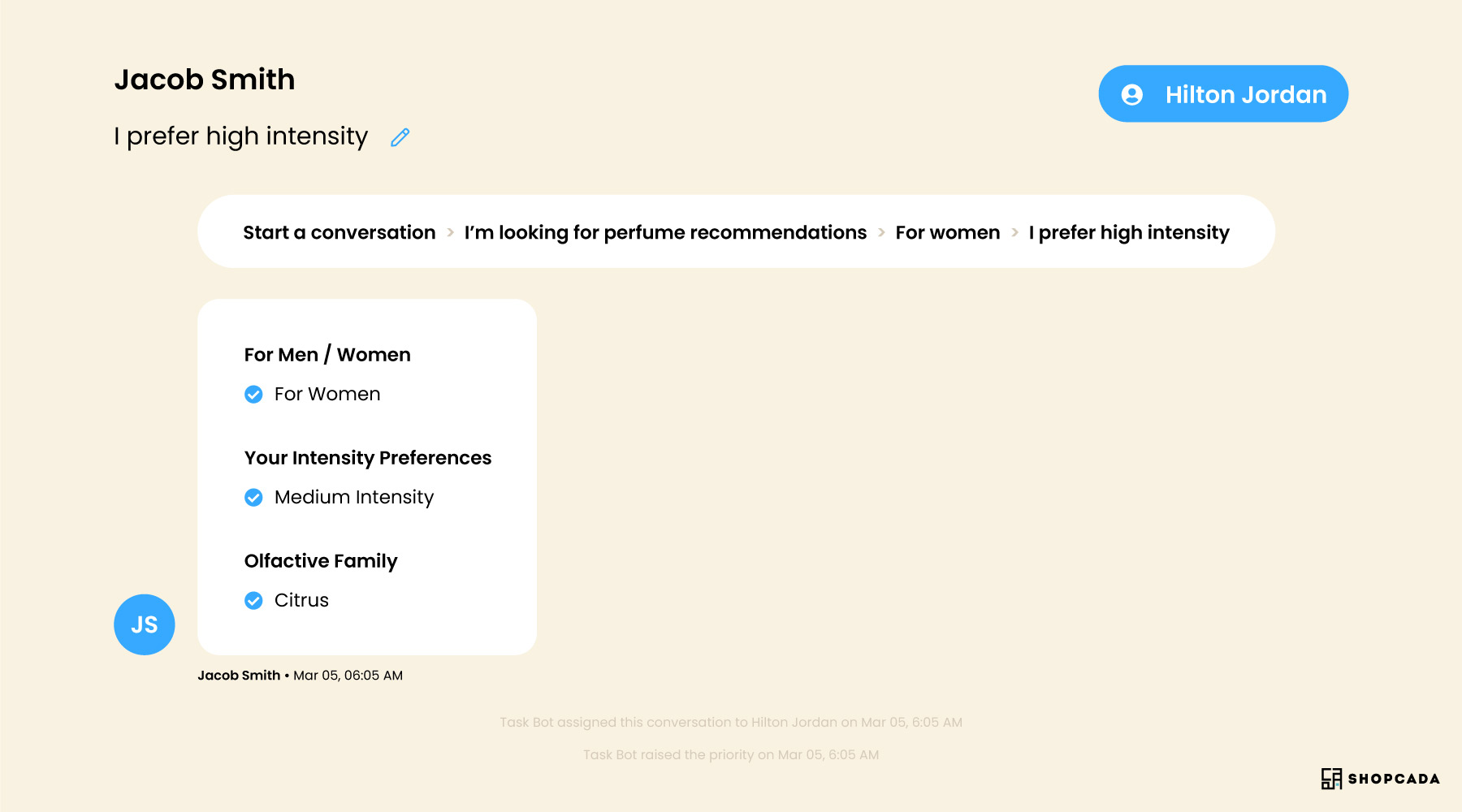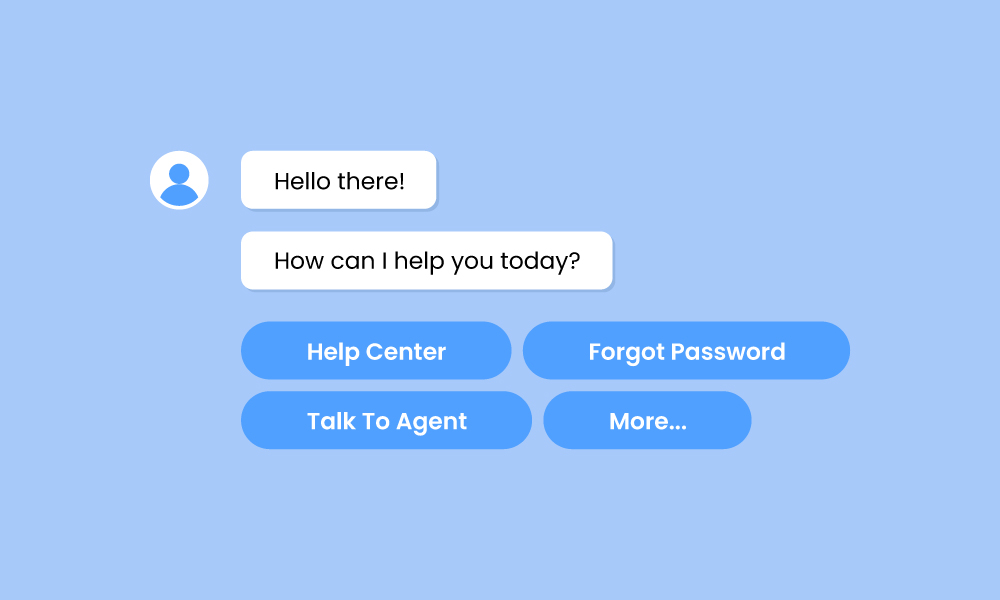Live Chat: Why Your Ecommerce Business NEEDS It!

When you're looking for a specific type of shoe, but you can't find it in your size, it's easy to wonder if the store might be out of stock. Another possibility is that the boots might not come in half sizes.
You look for a staff member to help you, but there's no one around. There is a plaque on the wall with a phone number to call for help.
You could do that, but it seems like a lot of effort just to ask a quick question. You start to wonder: "Do I want these boots?" Ultimately, you decide it wasn't meant to be and you leave without purchasing anything.
Most customers want answers to their questions quickly. If they can't get an answer quickly, they will leave your store and look for it elsewhere.
What is live chat & why do you need it?
Ecommerce live chat is often a small window on your website that allows you to answer customers' questions.
It is important for online shoppers to feel safe when they are buying something. One way to make them feel safer is by using a security system.
Your customer support team is always monitoring your live chat software. They want to make sure they don't miss any questions, concerns, or complaints from customers. If someone has a bad experience, this might be a way to turn it around.
Benefits?

Saving Time
Some 73% of customers say that it is really important for a company not to waste their time. That means that a company needs to be careful about how it spends the customer's time. For example, by offering free shipping and easy returns, or by being nice to the customer.
Offering live chat support is the best way to help your customers save time. People don't have to leave their shopping experience to find answers or wait for a reply to an email. They can just ask you a question through live chat.
Using live chat helps customer service representatives serve more than one customer at a time. This makes their work more efficient.
Avoid Hesitations
If a customer has a question and can't find the answer right away, that customer might start to doubt if they want to buy the product.
If a customer has a question about shipping costs, but there’s no information about it on your website, they may not feel confident that the cost will be reasonable. This might make them doubt if buying the product is worth it.
Some common questions are:
-
When will I receive my order if I order it today?
-
Can I get a discount if I buy multiple items at once?
-
Do you provide free samples?
Even if someone answers an email query within a few hours, the customer has already lost interest in your product. It will be harder to get that person to come back and buy from you than it would have been if the questions could have been answered right away.
Live chat provides customers with the opportunity to get answers right away, so they can continue shopping confidently.

Brand Communication
Embedding live chat right into your ecommerce website means the support experience is seamless for customers.
If you want to contact us, you can either call us or email us from a separate page on our website. This takes you out of the carefully designed customer experience on our website.
Live chat is a way to talk to people who are looking at your website. You can use the same tone of voice on your website when you talk to people on live chat.
Insightful Insights
With live chat, you can ask the customer for feedback right after they've solved their problem. This is easier for them than a follow-up phone call or email survey.
Plus, because it happens in real-time, you're capitalising on the momentum of a solid interaction that just took place.
Additionally, live chat lets you see how people are using your website. You can see what they do on your website and where they get stuck. This helps you understand where people have problems on your website and how to fix them.
Human Connections
A friendly chat box offers instant support from a real person. This feels more like a traditional shopping experience than just having a phone number customers can call or an email address to contact.
Plus, live chat can be programmed to pop up with a question like "How can I help you?" This replicates the experience of speaking to a salesperson in a traditional store.
Pro-tip: Make sure that your representatives speak to people in a friendly way. They should sound like they are real people and not robots. This will make the customers feel more comfortable and likely to buy from you.
Common Misconceptions
Some ecommerce store owners have some trouble shaking off the pain points surrounding customer support and live chats, but these problems are usually easy to solve. Let’s go through some of them here.
24/7 Availability
Many people think that live chat is a lot of work. But if it is done well, it can work just as well when people are offline as when they are online.
For example, let's say someone wants to start their refund process at 3:00AM in the morning when your whole team is sleeping.
If you use live chat on your website, it can include automated workflows to direct your customers to the next relevant step. This will help them find what they need without having to wait for a reply from you.
Your customer can start the refund process without needing to talk to anyone. They will still feel like it was a helpful and personalized interaction with your brand.
Even if a customer can't completely solve their issues, they have still given your support team the information they need to jump in and take care of the issue. This will help keep communication with the customer going smoothly.
Money, Money, Money
Live chat can be expensive from both a time and financial perspective...in the beginning.
You need to do the following:
-
Spend time configuring it on your website.
-
Jump in and out of live chat all day, answering questions and diverting your attention away from other tasks.
-
Hire more customer service representatives to handle it.
Even though it may not look like it, the truth is that an effective chat system that integrates self-service and supports asynchronous communication will save you time and money in the long run.

Hard To Measure ROI
Measuring the exact return on investment (ROI) of live chat is difficult, but there is enough data available to demonstrate the ROI.
To begin, customers who use live chat before purchasing have a 10% increase in average order value. A 10% increase in AOV will more than cover the cost of implementing your live chat system for most brands.
You can see a breakdown of conversations that led to purchases on a daily, weekly, monthly, or annual basis. Measuring the ROI of your live chat will be straightforward.
Customer service will eventually become a marketing channel, and you will have clear data to help you make decisions on new initiatives.
3 Ways Live Chat Can Help Ecommerce Stores Improve Customer Experience
❶ Greet customers as they arrive, just as you would in a physical store.
As ecommerce expands, it becomes increasingly important to treat it as your primary storefront.
Even if you have a physical location, the rapid growth of ecommerce means you must adapt and meet customers where they expect to find you.

You must demonstrate to potential customers that they can have an experience on your website that is comparable to that of a physical store.
When new visitors arrive on your site, you can greet them and ask if they need any assistance or direction, resulting in a personalised, helpful, and high-quality customer experience.
If they are returning visitors or existing customers, you can tailor your message even further.
As an example here’s what you can use:
"Hello and welcome to [Brand Name]! Please let us know if there is anything else we can do for you."
"[Customer Name], welcome back. Happy shopping, and please let us know if we can assist you!"
Your store will be as friendly and welcoming as your customers' favourite brick-and-mortar stores.
❷ Recover abandoned carts as soon as possible.
The average rate of cart abandonment is 69.8%. That means that the majority of customers who visit your store consider purchasing but do not complete the transaction.
But what if you could recoup a sizable portion of that potential revenue?
To reduce cart abandonment, use live chat to proactively assist customers and alleviate any concerns they may have about purchasing your product — and potentially even upsell them.
Assume someone has had an item in their cart for 15 minutes but has not checked out. You can send an automated message to the customer asking a question like:
-
Is there anything I can do for you today?
-
Do you have any concerns or questions about [Product]?
Sometimes all you need to do is ask a simple question to elicit a response.
Your customer may complain about the shipping costs, or they may be deciding between two products.
You can assist them in selecting the best product for their needs and offer a shipping discount — in real-time or through an automated self-service workflow.
As a result, you will gain a new customer who would not have purchased from you otherwise.
Proactively using your live chat is an excellent way to improve customer satisfaction, sales, and revenue all at the same time.

❸ Assist customers in locating the best products for their requirements.
You can use your live chat as a smart product recommendation engine by incorporating self-service automation.
For example, in the following conversation, Jacob (a potential customer) is looking for perfume.
He can use the live chat widget's self-service option to search for recommendations based on who the perfume is for, how intense it should be, and the scent family he prefers.

The self-service system can then send him a list of product recommendations. If Jacob is a returning high-value customer, a member of your support team can step in and recommend new products that he might be interested in.
This is a tried-and-true strategy: 310 Nutrition, a leading health and nutrition brand, used self-service to answer routine questions, freeing up agents' time to assist customers during the purchasing process. Because of the high level of personalization offered by live chat, they saw a 17% increase in conversions from support conversations.
It's a straightforward but effective method for increasing conversions and making your website experience feel as personalised as an in-store experience.
Best Practices
➀ Include self-service options alongside live chat
If your live chat is entirely dependent on your support team's availability, it will fail miserably. It will overwork and overwhelm your team with all of the messages they must respond to.
Furthermore, 81% of customers try to solve problems themselves before contacting a support representative, so you must make that process as simple as possible for them.
Your live chat system should combine 24/7 self-service elements with elegant ways to use the chat interface after hours to initiate conversations that can be completed when agents become available for the best results.
It will enable you to provide an experience that is similar to real-world interaction in terms of speed, helpfulness, and even the number of tickets that can be resolved.
If a complex question cannot be automatically resolved, it will be forwarded to your team to answer. The main advantage here is that your team will not spend all day answering the same questions. Customer satisfaction will rise as support rep productivity rises.

➁ Enable asynchronous communication
Even if your team isn't available to chat in real-time, you should still let your customers interact with your live chat widget.
Everyone has had the frustrating experience of attempting to contact a company but receiving out-of-office auto-responders, being placed on hold, or being ignored for days.
Allowing your customers to communicate with you even when you are not in front of the computer will significantly improve your customer experience.
When you combine live chat with self-service elements, you will be able to solve customer problems even when you are not present or your support agents are busy with other customers.
Create a variety of pre-set workflows in your self-service system, such as:
-
How to Get Delivery Status Updates
-
How to Begin a Product Refund Process
-
Taking care of billing issues
Most queries will be similar, and once you've identified them, you can build your self-service system to handle them.
It will free up support time while also improving customer satisfaction by answering your customers' most pressing questions.
➂ Combine all of your channels into a single inbox
Rather than treating live chat as a separate channel, it is more effective to integrate it with your other customer support channels, such as email and social media.
Even if you're not actively monitoring your social media inboxes, you should be notified if a customer sends you a message on Messenger or Instagram.
One significant advantage is that you can add context to social media conversations. If you managed the channels separately, your team would have to manually look up customer information and previous order information.
By centralising your social media support messages, you can automatically see details on previous orders, conversations, and other important details to assist your support team in successfully resolving tickets and providing an exceptional customer experience.

➃ Keep your message content as simple as possible
A conversational channel is a live chat. Customers do not want to read long, complicated messages from you.
Instead of long conversations, use your live chat to send short and clear messages.
Rather than engaging in lengthy discussions, direct people to relevant information, such as a detailed help doc, or direct them to a self-service system where they can quickly resolve their query.
Over time, you'll receive common questions, identify edge cases, and be able to update your support system to address them.
Your team will then be able to use the time previously spent writing lengthy responses to focus on pressing tickets that need to be resolved, as well as work on other important projects and tasks.
➄ When each chat is finished, close it
If you leave your conversations open, your team will become confused about what needs to be answered and what does not.
Make sure your team has a system in place for closing every chat, such as:
-
Inquire if the customer requires any additional assistance.
-
A series of closing questions should be asked.
-
Point them in the direction of other useful resources.
-
Request that they rate their support experience.
This process ensures that every conversation is completed and that no customers fall through the cracks and are forgotten about.
You can gather valuable feedback by asking customers how they liked their experience.
Bonus Tip
When a customer has a question, they want a straightforward answer - not a confusing runaround. Employees should have a singular tone of voice and brand identity when dealing with customers so that the customer can easily get the information they need without feeling like they're being passed around from person to person.
This brings up the issue of having a consistent brand identity across all chats as it also instils confidence in the customer that they're dealing with a professional organisation that knows what it's doing.
Furthermore, a cohesive team is more likely to resolve conflicts quickly and efficiently, which is beneficial for both the customer and the company. In short, there's no downside to having a singular tone of voice and brand identity - it just makes good business sense.
Closing Words
To summarise, live chat is a valuable feature that many businesses use to improve conversions, generate leads, and increase sales.
It aids in relieving your stress so that you can be available to your visitors 24 hours a day, seven days a week. It also gets to the bottom of the problem with remarkable speed and efficiency.
Apart from being extremely user-friendly, it also moves your customers through the sales funnel and ensures that they are satisfied.
As a result, it is highly recommended that you incorporate the live chat feature into your conversion strategy going forward.

